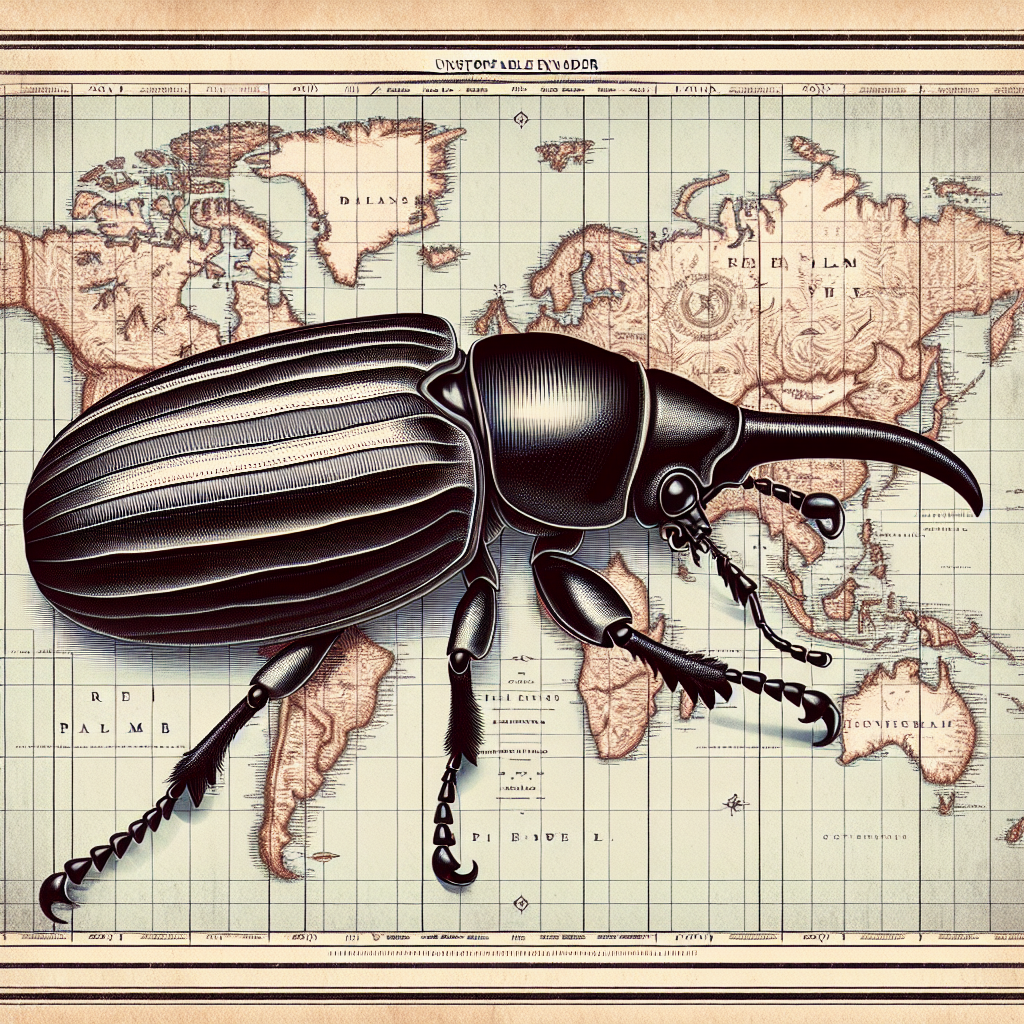The Remarkable Rhynchophorus Ferrugineus: Nature's Own Lumberjack!
Have you ever heard of a beetle being a menace to the world of palm trees? Meet the Rhynchophorus ferrugineus, commonly known as the red palm weevil, the elusive culprits that have earned quite the reputation as palm tree predators across the globe. They are the beetle world's lumberjacks, and their innate passion for tunneling into palm trunks has made them a pervasive pest. But don't let their destructive side fool you too much—there's fascinating science and an optimistic future in addressing their threat.
A Little Monster with a Big Impact
The red palm weevil is originally from Southeast Asia, but over time, it has traveled far and wide—reaching the Middle East, Africa, Europe, and even parts of the Caribbean. This beetle has an interesting lifecycle; it begins as an egg laid by a female weevil in the palm tree's deliciously tender heart. From there, the larvae—a rather plump and voracious grub—bore deep into the tree, effectively munching away the tree's life from the inside. What makes these pests so notorious is their preference for palm varieties cultivated in landscapes and agricultural plantations.
Why Are They a Serious Threat?
A single female can lay up to 300 eggs in its lifetime, making this beetle particularly difficult to manage once it's established a presence in an area. Their subsurface feeding habits jeopardize the structural integrity of palm trees, eventually leading to wilting, trunk collapse, and inevitable death of the host plant. This has a direct impact not just on aesthetic landscaping, but more worryingly on agricultural economies reliant on crop palms like Coconuts and Dates.
Spotting the Signs
Detecting a red palm weevil infestation early is a challenge; the symptoms aren't immediately apparent. However, with keen observation, some signs include the presence of holes and chewed out fibers at the base of the fronds, the oozing sap from the trunk, and of course, the dreadful sight of adult weevils themselves. A swaying palm crown or fallen fronds without apparent cause could also signify an infestation.
Strategies for Control: The Battle Plan
How do we combat this pervasive beetle? Scientists and environmentalists have been innovating on several fronts:
Monitoring and Trapping: One integral component of managing these beetles is through pheromone traps. By mimicking certain chemical signals, these traps can effectively lure and capture adult weevils, curbing their population spread.
Biological Control: Another exciting avenue is the use of natural predators and pathogens. Parasitic wasps and fungi that specifically target weevil larvae are becoming a frontline defense in biological management strategies.
Chemical Treatment: While not the most environmentally friendly option, insecticides are sometimes necessary, especially in heavily afflicted areas. Precision injection therapies directly deliver chemicals to infested areas while minimizing collateral damage to non-target species.
Cultural Practices: Proper sanitation, the removal of dead palm materials, and careful handling can minimize the attraction and potential infestation of weevils.
Scientific Advancements Leading the Way
Good news beyond their immediate mitigation is the promising scientific research being dedicated to not only curtailing the current incursion of these weevils but future-proofing against them and other similar pests. Advances in genomics are allowing experts to better understand the lifecycle and adaptations of the red palm weevil. These insights lead to more targeted and sustainable control strategies.
Researchers are also exploring the engineering of weevil-resistant palm cultivars to alleviate heavy reliance on chemical and biological interventions. Meanwhile, data analytics and precision agriculture using Internet-of-Things (IoT) devices offer an overview that can help farmers and stakeholders take timely, data-driven actions.
Humanity's Response: The Bigger Picture
The tale of the Rhynchophorus ferrugineus is a testament to the interconnected nature of our ecosystems and economies. The global response, from scientific initiatives to cultural practices, mirrors a bigger narrative about humanity's relentless drive to understand and adapt. This beetle might have a notorious reputation, but it’s also an invitation for collaboration and innovation.
Steps such as international collaborations for data-sharing on pest management, standardized quarantine measures, and educational campaigns showcase our ever-evolving toolkit for fighting such ecological adversities. These combined efforts not only aim to protect palm industries but also illustrate the potential of global cooperation in addressing pressing environmental challenges.
In the grand, optimistic scheme of things, the challenge posed by the red palm weevil isn't simply about where it came from or the extent of its spread—it's a call to action. Each solution we unearth opens doors for breakthroughs that enhance our stewardship over nature and its complexity.
Therein lies the beauty of what could seem like a daunting scientific problem—a chance to learn, adapt, and in the process, become wiser custodians of our planet. Let us march forward with the knowledge that a unified effort can indeed turn nature's lumberjack into a manageable force within our ecological networks.

